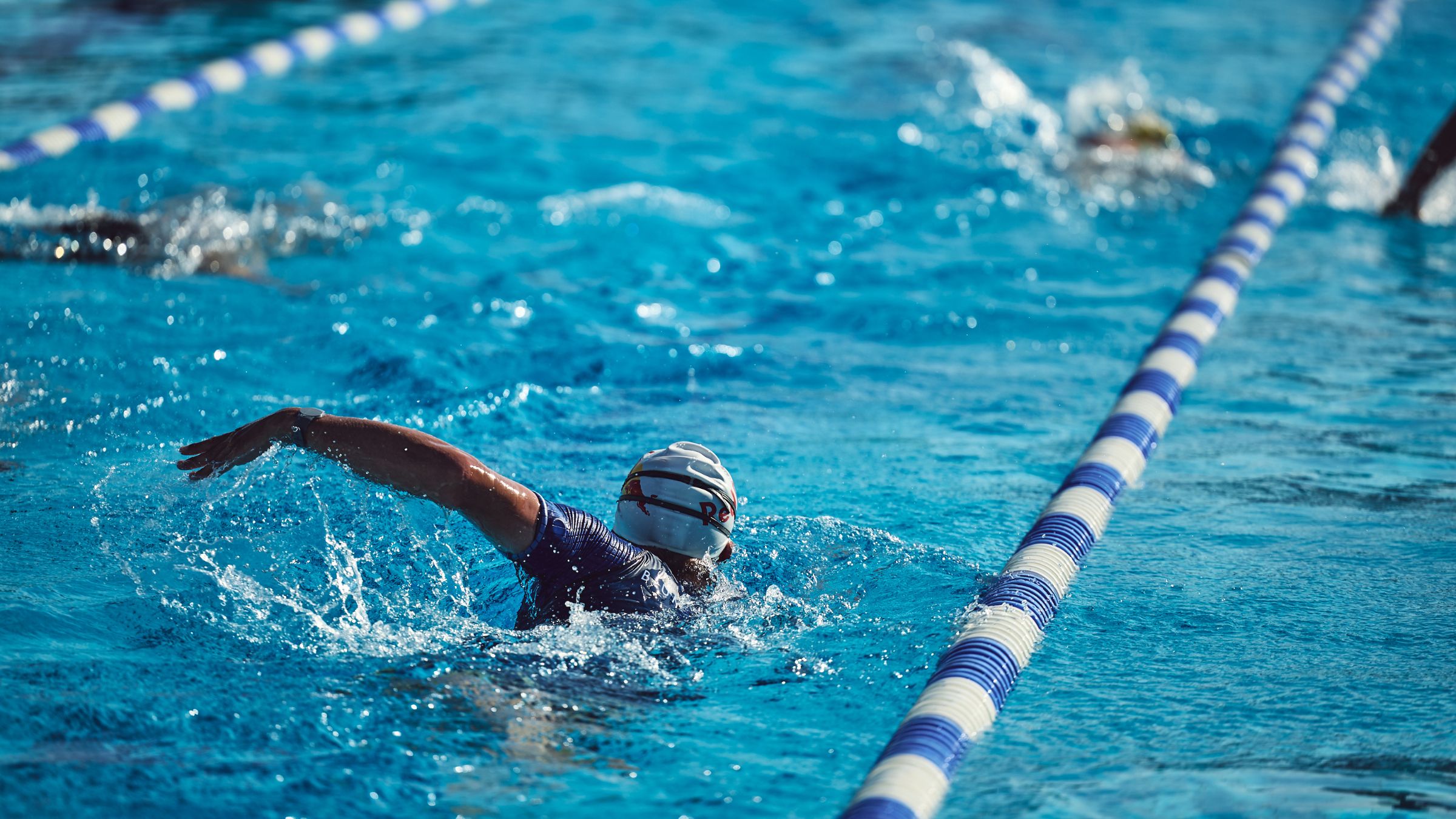Dear Coach: Do I Really Need to Practice Sighting?

Sighting drills should be a regular part of your triathlon swim training. (Photo: Professional Triathletes Organization)
Most triathletes, if pressed, will admit they don’t really practice sighting in the pool. It slows them down and disrupts their rhythm. It feels weird, and perhaps more importantly, it looks weird. Many justify their lack of practice by claiming that sighting in a pool just isn’t the same as sighting in open water. While that’s true, there are still plenty of reasons to practice sighting.
Why sighting is an important part of triathlon swim training
Racing is unpredictable and the only way to truly prepare for racing is to race. The course can be different, the water conditions can be different, and your competitors can be different. You never know what you’re going to get. If you’re fortunate to have easy conditions, a lack of sighting practice probably won’t hold you back. However, it’s when you’re faced with challenging conditions that you want your sighting skills to be rock solid and locked in. That only comes with practice, which means they’ll be there when you need them most.
Effective swim racing is all about creating and sustaining an efficient rhythm. Sighting definitely disrupts the rhythm of your stroke. The less effective your swimming skills are, the more this is going to be true. Practicing your sighting is going to help you get back into the groove after you sight, and when done well, it can prevent you from losing the groove in the first place. Unfortunately, there’s no real trick for getting one’s rhythm back. You just have to practice.
Effective sighting also gives you control of your destiny. You don’t have to rely on the pack or another individual to guide the path. You’re not going to be locked into their speed or their course. You get to choose your own. That requires practice so that you’re confident in your ability to effectively sight.
Lastly, it’s important to practice sighting because the physical demands are different. There are no activities in everyday life that in any way prepare the neck for what’s required to sight in a triathlon swim. Further, these muscles are awfully small, and if they’ve never been conditioned to sight, they’re going to get very tired, very fast. This might not be a big deal if you don’t need to sight much. However, if you need to do a lot of sighting, this fatigue is going to become a big problem at exactly the wrong time!
Luckily, it’s not hard to incorporate sighting into your triathlon swim training. To get started with the fundamentals motions of sighting, check out How to Sight When Swimming in Open Water.
How often should you practice sighting?
Hopefully, you’re convinced that practicing sighting it worth the time. How much time do you need to dedicate to it? If you’re a seasoned racer, and you can’t remember the last time you had sighting issues in competition, simply practicing sighting a couple times per week as a part of a warm-up or a main set should be sufficient. It’s mostly about staying in touch with a skill you’ve got down.
On the other end of the spectrum, if you’ve struggled with sighting in your races, it’s wise to incorporate sighting in most of your workouts. Consider it a skill, just like your pull or your kick. It needs to be practiced frequently and it needs to be practiced in all aspects of the workout. While practicing sighting during warm-up is great for getting some low-stress repetitions, you also want to practice sighting while swimming fast, hard, and tired, just like you will be in a race.
RELATED: It’s Time to Become an Open-Water Sighting Expert
A workout for practicing triathlon swim sighting
The goal of this workout is to practice sighting at different speeds and getting right back into the rhythm of the stroke as fast as possible. You want to make the sighting as seamless as you can, while still ensuring you get a clear view of what you’re sighting. Just pick a spot to sight for each lap, whether it’s the clock on the wall, a lifeguard stand on the deck, or even a landmark outside the window of your swimming facility.
Warm-up:
200 easy swim
Main Set:
3 rounds through:
- 4×25 Paddle Cap Freestyle
- 50 Freestyle; breathe every 5
- 3×50 Freestyle; build to strong; practice sighting twice per 25 of each 50
- Take ~10-20 seconds rest between repetitions
6 rounds through:
- 200 Freestyle; steady effort; sight 3 times on two separate laps
- 75 Freestyle solid effort; sight once per lap
- 75 Freestyle strong effort; sight once per lap
Take ~20-30 seconds rest between repetitions
Cooldown:
200 easy swim
RELATED: Triathlete’s Guide To Going From Pool To Open Water
Andrew Sheaff is the swim coach at the University of Virginia.